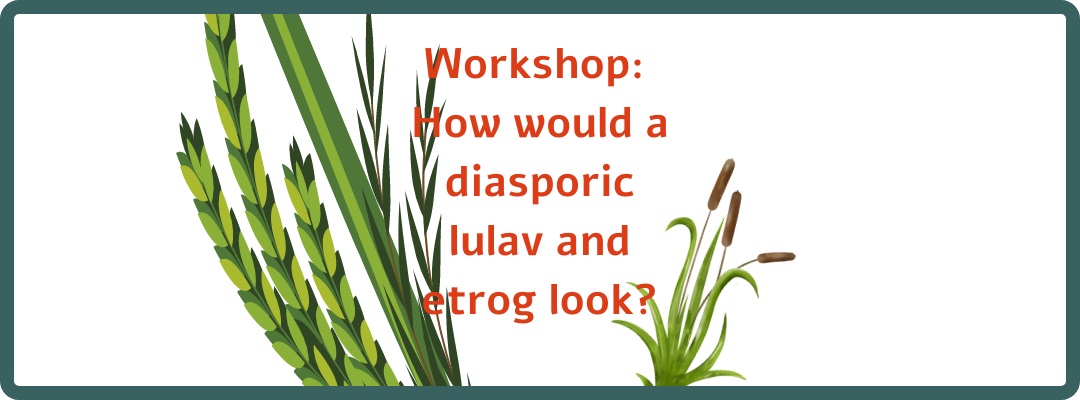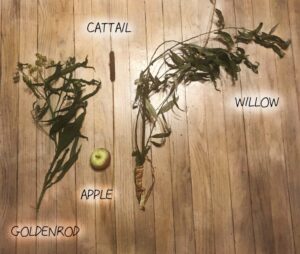1 Oct: Local Lulav All Ages Workshop

Private location in Amsterdam
01/10/2023 00:00Location will be mailedSukkot is coming up. We imagine that this was a great festival that marked the end of the harvest, with plenty to eat, music, and rest. People would gather in makeshift huts (sukkot!) to celebrate together. This holiday reminds us that we were once people who marked time by harvests and plantings and the variation of the seasons.
On Sukkot (which actually means huts) many Jews still build huts with rooves of loose branches that show the sky. Some even live in them for a full seven days.
The lulav
A remnant of Sukkot magic is the waving of the lulav and the smelling of the etrog. What’s a lulav? Here’s the Wikipedia definition:
Lulav ([lu’lav]; Hebrew: לולב) is a closed frond of the date palm tree. It is one of the Four Species used during the Jewish holiday of Sukkot. The other Species are the hadass (myrtle), aravah (willow), and etrog (citron). When bound together, the lulav, hadass, and aravah are commonly referred to as “the lulav”.
The etrog is a citrus fruit that is like a big lemon.
The ritual we do involves waving the lulav and saying a blessing. We wave it up, down, to the right, and to the left. Find out more on My Jewish Learning.
What would a diasporic lulav and etrog look like?

What if we had to create one with the materials available to us here in the Netherlands? What would we use instead of a palm frond? Instead of myrtle? Would we still use willow? And what about the etrog?
We will be creating our own lulavs together at the Lulav Making Workshop on 1 Oct. This is truly an all-ages event. Please join us. It will be fun! And there will be snacks!
Inspired by The Local Lulav project initiated by Rakia Sky Brown, Gabi Kirk, Noah Rubin-Blose, and Miriam Saperstein. Read more about it on Jewish Currents.
